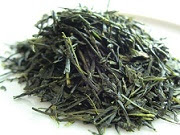Wakocha (Japanese black tea) is a recent trend in Japan as I posted on Jan 26, 2011.
More tea farmers are producing their own wakocha. But, one of the newcomers named “Kaga no Kocha” is slightly different in terms of marketing. Apparently, production is organized by a local tea association, rather than by individual farmers.
Kaga (in Ishikawa prefecture), known as “Little Kyoto”, is known as a historical area. Roasted stem tea called “bocha” is renowned, but strictly speaking, Kaga is not a major tea producing district. However, this area has tried to create “wakocha culture” not only by cooperating with some tourist spots, but also encouraging the local specialties including porcelain and wagashi (traditional Japanese confection).
The concept of this tea is “omotenashi no wakocha (welcome wakocha)”. Production amount is very limited at this point, but I believe this is a very promising tea. The newcomer harmonized with tradition will warmly welcome more and more people, as time goes on.
*Tea pakckage is tied with mizuhiki (traditional paper strings). This represents tea leaves “isshin niyo” (one bud and two leaves), which are used to produce the finest-quality tea.
*Kaga no Kocha
Blend of Yabukita and Okuhikari, both of which are usually used for green tea.
Blend of Yabukita and Okuhikari, both of which are usually used for green tea.











